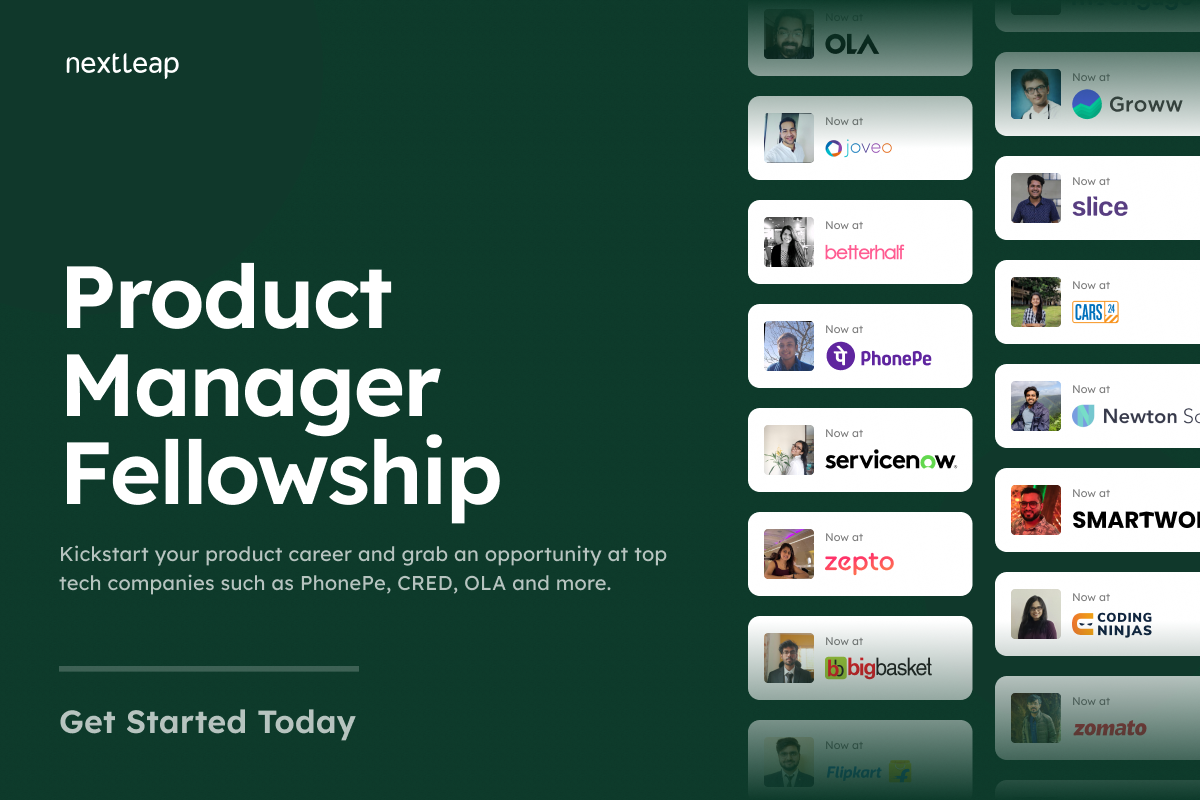The Complete Guide to Mobile App Marketing: Best Practices, Techniques and Trends

Mobile app marketing is a rapidly evolving field and has become increasingly important as the mobile app industry continues to grow. Whether you are launching a new app or looking to reinvigorate an existing one, it’s essential to understand the best practices and techniques for mobile app marketing in order to be successful. In this comprehensive guide, we will cover the seven steps to crafting a killer mobile app marketing plan, the art of user acquisition for mobile apps, the power of App Store Optimization, how to convert mobile app installs into active and engaged users, and the top trends shaping the future of mobile app marketing. Let’s get started!

Become a Product Manager
Learn from top industry experts, get access to 1 year placement support and transition into product management at India's top tech companies.
7 Steps to Crafting a Killer Mobile App Marketing Plan
The first step in creating a successful mobile app marketing plan is to understand your audience. This means taking the time to research your target customers, their habits and preferences, and their consumer journey. This step should include surveying your current users, gathering feedback from those who have uninstalled your app, and using analytics tools to monitor user behavior. Once you have an understanding of your audience, you can then develop a strategy that is tailored to the needs of this group.
The next step is to create compelling content. This content can include copy for ads, blog posts, video tutorials, and more. A key element in crafting effective content is developing a unique voice that resonates with your users. This voice should be consistent throughout all of your marketing efforts.
The third step is to choose the right channels for promotion. Once you’ve identified your target audience, you need to determine which channels will be most effective in reaching them. In addition to traditional channels such as organic search and paid search ads, consider using influencer marketing and social media to reach new audiences. It’s also important to experiment with messaging strategies and platforms in order to find out which combinations are most effective.
The fourth step is to optimize your ads. To maximize your success with mobile app marketing, it’s important to continuously optimize your ad campaigns. This includes testing different ad formats, A/B testing ad messages, optimizing bids, and monitoring performance metrics.
The fifth step is to measure results. It’s important to track the performance of your mobile app marketing efforts over time. Metrics such as total installs, user engagement, cost-per-click, and cost-per-acquisition can provide insight into what’s working and what’s not working.
The sixth step is to adjust your strategy. After measuring the results of your mobile app marketing efforts, it’s important to adjust your strategy accordingly. This could mean changing messaging strategies or shifting budget allocations in order to increase performance.
The seventh and final step is to stay up-to-date on industry trends. Mobile app marketing is a dynamic field that is constantly changing. To stay ahead of the curve, it’s important to keep up with the latest trends in mobile app marketing.
The Art of User Acquisition for Mobile Apps: Best Practices and Techniques
User acquisition is a key component of any mobile app marketing plan. It involves attracting new users to download and use an app. There are several strategies for acquiring users including organic search optimization, paid advertising, influencer marketing, and social media promotion.
Organic search optimization involves optimizing an app’s metadata so that it appears more prominently in search results on the App Store and Google Play Store. This includes optimizing titles, descriptions, keywords, and images in order to increase visibility and improve discoverability.
Paid advertising involves running sponsored ads on platforms such as Google Adwords, Facebook Ads, and Apple Search Ads. These ads can be targeted by location, demographic, or interest in order to reach the right audience. It’s also important to continuously monitor performance metrics in order to optimize campaigns over time.
Influencer marketing involves partnering with influencers in order to promote an app within their network. This can be done through sponsored content or social media campaigns. It’s important to select the right influencers who match the interests of your target audience.
Social media promotion involves creating content and engaging with users on platforms such as Instagram, Twitter, and Snapchat. This can include running contests, giveaways, or offering exclusive discounts in order to gain exposure and increase downloads.
The Power of App Store Optimization (ASO) in Mobile App Marketing
App Store Optimization (ASO) is an essential part of any mobile app marketing plan. The goal of ASO is to improve an app’s visibility on the App Store and Google Play Store by optimizing its metadata—such as title, description, keywords, images, etc.—for search terms that are relevant to the app. This can help an app rank higher in organic search results and increase its number of downloads.
In order to achieve success with ASO, it’s important to select the right keywords that are relevant to the app and likely to be searched by users. This can be done through keyword research tools or by analyzing the competition. It’s also important to continuously monitor performance metrics—such as rankings and downloads—in order to adjust keywords accordingly.

Become a Product Manager
Learn from top industry experts, get access to 1 year placement support and transition into product management at India's top tech companies.
How to Convert Mobile App Installs into Active and Engaged Users
Attracting new users is just one part of the equation when it comes to mobile app marketing—it’s equally important to ensure that those users remain engaged with the app over time. This starts by designing an onboarding experience that helps users understand how to use the app quickly and easily. This can include providing tutorial videos or offering rewards for completing certain tasks.
It’s also important to offer incentives for users to return to the app on a regular basis. This could include offering rewards or discounts for frequent use or providing rewards for completing certain tasks or levels within the app.
Finally, it’s important to listen to user feedback in order to ensure that the product continues to meet user needs over time. By gathering feedback from both current users and those who have uninstalled the app (via surveys or focus groups), it’s possible to identify areas for improvement and make changes accordingly.
The Top Trends Shaping the Future of Mobile App Marketing
Mobile app marketing is a rapidly evolving field with new trends emerging all the time. Some of the top trends shaping the future of mobile app marketing include predictive analytics for personalization, AI-powered messaging for user engagement, augmented reality for immersive experiences, chatbots for customer service, and voice search optimization.
Predictive analytics involves using data-driven insights in order to anticipate user habits and tailor content accordingly. For example, this could involve providing personalized recommendations based on a user’s browsing history or sending push notifications at times when a user is most likely to engage with them.
AI-powered messaging involves using artificial intelligence technology in order to create automated messages that can engage with users in a natural way. This could include automated replies on social media or chatbot conversations that provide personalized help.
Augmented reality involves incorporating computer-generated elements into real-world scenarios in order to provide enhanced experiences for users. This technology can be used for product demos or tutorials within an app.
Chatbots involve creating automated conversations with users in order to provide help with customer service inquiries or other tasks such as product recommendations or user onboarding.
Finally, voice search optimization involves optimizing an app’s metadata—such as titles and descriptions—so that it appears more prominently when users search by voice on devices such as Amazon Echo or Google Home.
By staying up-to-date on these trends and incorporating them into your mobile app marketing strategy, you can ensure that your efforts continue to be successful in the years ahead.

Become a Product Manager
Learn from top industry experts, get access to 1 year placement support and transition into product management at India's top tech companies.



